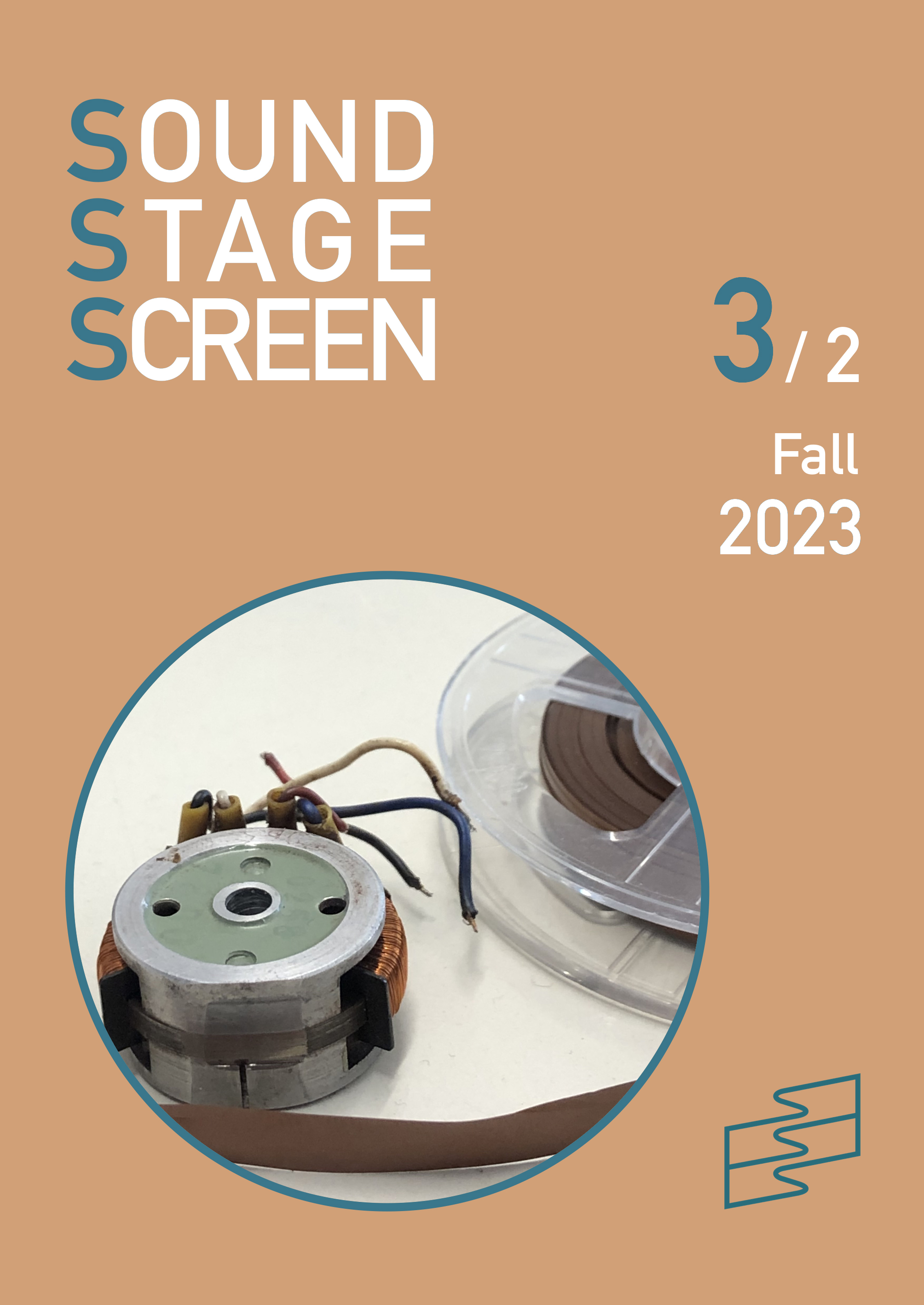Abstract
Recently, the use of Geographic Information System (GIS) in the field of urban music studies has been increasing. The article will address the benefits and risks ingrained in its employment and highlight the importance of adopting a blended approach such as the one proposed by “deep mapping.” Over the past decade, the constellation of mapping practices associated with the “depth” metaphor has shown the potential of GIS as an experiential platform, capable of including both quantitative data and qualitative multimedia content. Next, I will present the advantages of using Leaflet for R, an open-source web-mapping library, in the creation of deep maps. Its accessibility, even for non-professional programmers, makes it a valid alternative to commercial platforms. In the second part of this article, I will showcase my research on Milan's live music scene from 1958 to 1962 as a case study. I will illustrate how the flexibility of these tools allowed me to develop a circular workflow that integrates historical sources, field research, and data visualization.
References
Augé, Marc. In the Metro. Minneapolis: University of Minnesota Press, 2002.
Atlas, Allan. Music at the Aragonese court of Naples. Cambridge: Cambridge University Press, 1985.
Behr, Adam, Craig Hamilton, and Patrycja Rozbicka. “Birmingham and the (international) business of live music in times of COVID-19.” Journal of world popular music 9, no. 1-2 (2022): 31–48. https://doi.org/10.1558/jwpm.23348.
Bodenhamer, J. David. “The Potential of Spatial Humanities.” In The Spatial Humanities Scholarships, edited by David J. Bodenhamer, John Corrigan, and Trevor M. Harris, 14–30. Bloomington: Indiana University Press, 2010.
Bodenhamer, J. David, John Corrigan, and Trevor M. Harris, ed. Deep Maps and Spatial Narratives. Bloomington: Indiana University Press, 2015.
Bodenhamer, J. David. “The varieties of deep maps.” In Making Deep Maps: Foundations, Approaches, and Methods, edited by David J. Bodenhamer, John Corrigan, and Trevor M. Harris, 1–15. Abingdon: Routledge, 2022.
Born, Georgina. “Introduction.” In Music, sound and space: transformations of public and private experience, edited by Georgina Born, 1–70. Cambridge: Cambridge University Press, 2013.
Carter, Tim. “The Sound of Silence: Models for an Urban Musicology.” Urban History 29, no. 1 (2002): 8–18.
Cohen, Sara. “Bubbles, Tracks, Borders and Lines: Mapping Music and Urban Landscape.” Journal of the Royal Musical Association 137, no. 1 (2012): 135–70.
Cohen, Sara. “Live music and urban landscape: mapping the beat in Liverpool.” Social Semiotics 22, no. 5 (2012): 587–603. https://doi.org/10.1080/10350330.2012.731902.
Fenlon, Iain. Music and patronage in sixteenth-century Mantua. Cambridge: Cambridge University Press, 1982.
Frith, Simon. “The materialist approach to live music.” Live Music Exchange. Published online July 2, 2012. http://livemusicexchange.org/blog/live-music-101-1-the-materialist-approach-to-live-music-simon-frith/.
Harvey, David. Justice, Nature and the Geography of Difference. Oxford: Blackwell, 1996.
Heat-Moon, L. William. PrairyErth (a Deep Map). Boston: Houghton Mifflin, 1991.
“Leaflet for R.” Accessed May 17, 2024. https://rstudio.github.io/leaflet/.
“Live Music Mapping Project.” Accessed May 17, 2024. https://livemusicresearch.org/.
Lockwood, Lewis. Music in Renaissance Ferrara, 1400-1505: The creation of a musical center in the fifteenth century. Oxford: Oxford University Press, 1984.
“MML - Mapping Musical Life.” Accessed May 17, 2024. http://www.mml-project.it.
Monmonier, Mark. How to Lie with Maps. Chicago: Chicago University Press, 1991.
Moretti, Franco. Distant reading. London: Verso, 2013.
Newcomb, Anthony. The Madrigal at Ferrara, 1579-1597. Princeton: Princeton University Press, 1980.
Nicastro, Martin. “Milan 1958-1962: Music Topography of a City (Main Dataset).” Zenodo, 2023.
https://doi.org/10.5281/zenodo.8126445.
Nicastro, Martin. “Milan 1958-1962: Music Topography of a City.” Published online August 23, 2023. https://musictopography.github.io/.
Nicastro, Martin. “Milan 1958-1962: Music Topography of a City (videomap library).” Zenodo, 2023.
https://doi.org/10.5281/zenodo.7990185.
Nicastro, Martin. “Milan_1958_1962_Music_Topography_of_a_City (v1.0.0).” Zenodo, 2023. https://doi.org/10.5281/zenodo.8340459.
“Oggi a Milano.” Il Giorno. March 28, 1960.
Patruno, Lino. “Milan 1958-1962: Music Topography of a City.” Interview by Martin Nicastro. March 22, 2022. Video, 12:17. https://musictopography.github.io//interviews/.
Peter, Beate. “The Lapsed Clubber Audio Map.” Manchester Digital Music Archive. Accessed May 17, 2024. https://www.mdmarchive.co.uk/map_home/the-lapsed-clubber-audio-map.
Presner, Todd, David Shepard, and Yoh Kawano. HyperCities: Thick Mapping in the Digital Humanities. Cambridge: Harvard University Press, 2014.
R Project. “What is R?”. Accessed May 17, 2024.
https://www.r-project.org/about.html.
Ridge, Mia, Don Lafreniere, and Scott Nesbit. “Creating Deep Maps and Spatial Narratives through Design.” International Journal of Humanities and Arts Computing 7, no. 1-2 (2013): 176–89.
Roberts, Les. “Preface: Deep Mapping and Spatial Anthropology.” In Deep mapping, edited by Les Roberts, VII–XV. Basilea: MDPI, 2016.
Schreibman, Susan, Ray Siemens, and John Unsworth. “The Digital Humanities and Humanities Computing: An Introduction.” In A Companion to Digital Humanities, edited by Susan Schreibman, Ray Siemens, and John Unsworth, XIII–XVII. Oxford: Blackwell Publishing, 2004.
Strohm, Reinhard. Music in late medieval Bruges. Oxford: Clarendon Press, 1985.
Terras, Melissa. “Peering Inside the Big Tent: Digital Humanities and the Crisis of Inclusion.” Accessed May 17, 2024. https://melissaterras.org/.
Tomelleri, Paolo. “Milan 1958-1962: Music Topography of a City.” Interview by Martin Nicastro. February 2, 2022. Video, 16:55. https://musictopography.github.io//interviews/.
Wilkinson, D. Mark, Michel Dumontier, Ijsbrand J. Aalbersberg, et al. “The FAIR Guiding Principles for Scientific Data Management and Stewardship.” Sci Data 3, no. 160018 (2016). https://doi.org/10.1038/sdata.2016.18.

This work is licensed under a Creative Commons Attribution-ShareAlike 4.0 International License.
Copyright (c) 2024 Martin Nicastro

